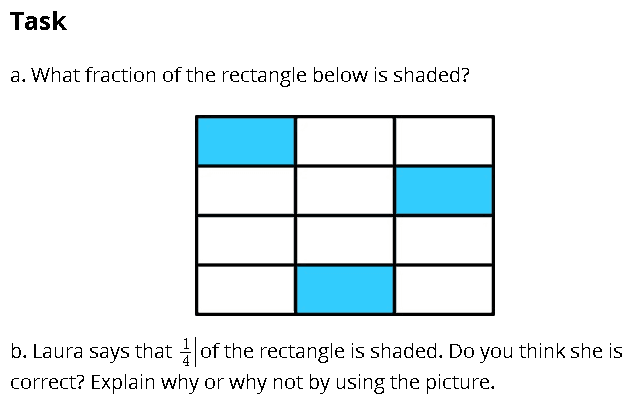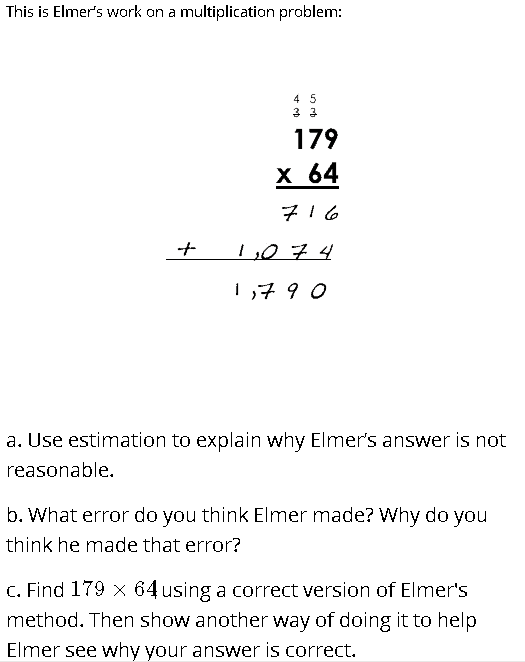The Common Core State Standards for Mathematics have ushered in a new era in which additional emphasis has been placed on critical thinking and deep conceptual understanding. I’ve worked both as a teacher and now as a coach to support my school in implementing the Standards for Mathematical Practice, and one of these Practices in particular led me to realize the need to supplement my anchor math curriculum with rich mathematics tasks.
The third Standard for Mathematical Practice asks students to “construct viable arguments and critique the reasoning of others.” Many anchor math curricula (including the one my school uses) don’t provide students with enough opportunities to do this. Tasks that are available from Illustrative Mathematics have become an invaluable tool for providing my students with these opportunities. I’ve successfully implemented two different strategies for utilizing these tasks in conjunction with my anchor curriculum.
Strategy 1: Use a task to strengthen an existing lesson.
In a lot of cases, I’ve been very pleased by how easily I was able to integrate a rich task from Illustrative Mathematics into an existing lesson from my math curriculum. Here is an example:
As a coach helping some of our 4th grade teachers plan for a lesson in which students were investigating equivalent fractions with visual models (content standard 4.NF.1), I found the opportunity to use the following task:
The lesson in the anchor curriculum involved students playing a game with a partner in which they were tasked with matching equivalent fraction cards (cards that showed a fraction and an area model of the fraction similar to the area model you see in the task above). We decided to ask the students to discuss the Illustrative Mathematics task before playing the game. This provided the students with a chance to think critically about the content and engage in discourse before playing the game. As a result, the game itself was much more fruitful. Students’ discussions with their partners were richer as they played.
Strategy 2: Create a new lesson within an existing unit using an Illustrative Mathematics Task.
Sometimes, it wasn’t easy to find a place within an existing lesson to plug in one of these rich tasks, but I would still feel as though my unit needed to be bolstered with more opportunities for critical thinking and discourse. Here is an example in which I added a new lesson to an existing unit of my anchor curriculum using an Illustrative Mathematics task:
As a 5th grade math teacher teaching a unit on multiplication and division, I had just finished a sequence of lessons in which my students were learning and practicing the traditional algorithm for multiplication (content standard 5.NBT.5). I chose to add a lesson, based on the following task:
I used the commentary on the web page to help with planning my lesson, and was very pleased with the level of discourse that my students were able to engage in. The depth of their content knowledge definitely benefited from adding this day to my unit.
A wealth of rich tasks, for all grades from K-12, are provided by Illustrative Mathematics on their website.




















